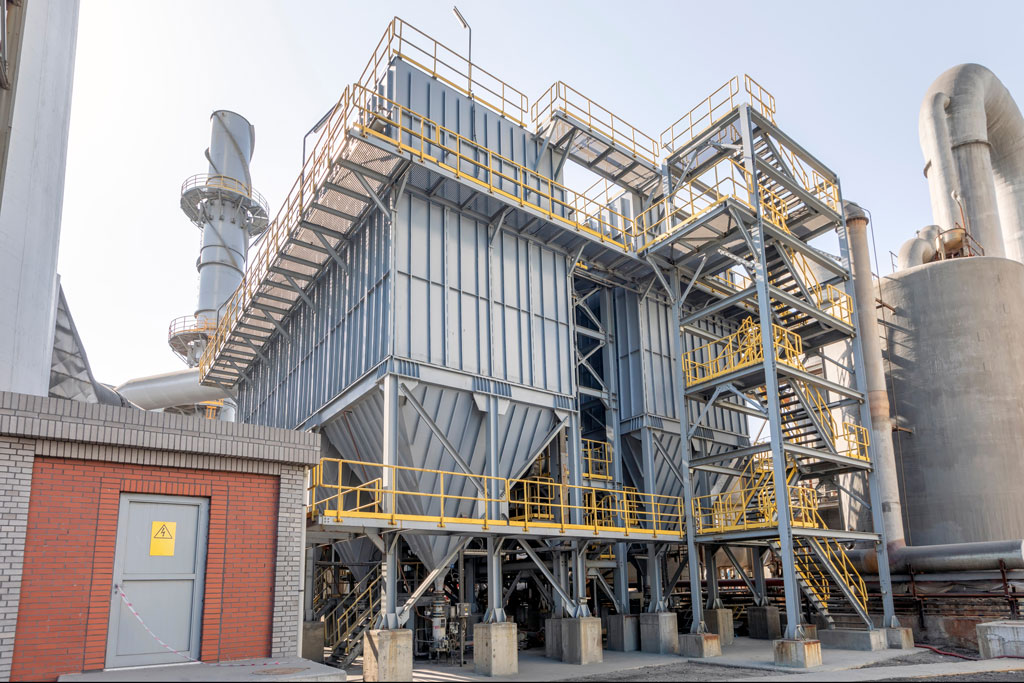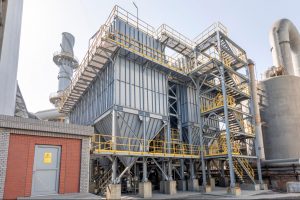 There are several different component parts that go into a dust collector for monitoring and control purposes. In this article, we are going to focus on timer boards. We will be comparing and contrasting a few of our timer boards, as well as discussing how we could help you to better protect your equipment in the most cost-effective manner.
There are several different component parts that go into a dust collector for monitoring and control purposes. In this article, we are going to focus on timer boards. We will be comparing and contrasting a few of our timer boards, as well as discussing how we could help you to better protect your equipment in the most cost-effective manner.
Continuous Cleaning
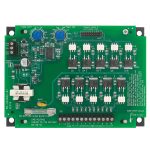
Dwyer has a lot of customers that use timer boards for continuous cleaning. This means that the timer board is always pulsing to clean the filters while the system is in operation. Very demanding applications require this; however, many applications do not. In a continuous cleaning system, there is no feedback to the timer board from a pressure device which monitors filter status. Instead, the system just uses a timer board, like the Series DCT500A timer board, which utilizes the on-board potentiometers to set the on and off time periods for the continuous pulsing.
Regardless of the reason why the system was setup that way, continuous cleaning could actually end up doing more harm than good. By continuously cleaning the filters, one could end up cleaning the filters even before they have had a chance to develop a dust cake, which is important for filtering purposes and protecting the filters. If one causes damage to the filters, that would result in an added service cost. Additionally, during continuous cleaning, you are constantly using valuable compressed air, which is costly. In order to avoid these issues and to optimize efficiency, manufacturers have started to implement on-demand cleaning where applicable.
On-Demand Cleaning Control System
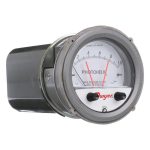
With on-demand cleaning, the timer board does not start pulsing to clean until the filters are actually dirty. Not only does this help to protect the filters and increase their life span, but limiting the amount of pulsing helps to preserve compressed air.
Originally, the common trend for on-demand cleaning systems was to use a timer board, such as our Series DCT500A, in conjunction with a Series A3000 Photohelic® pressure switch/gage. The Photohelic® switch/gage monitors the filters for dust build-up.
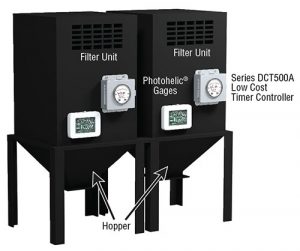 When the dust build-up and pressure drop across the filters exceeds a preset limit, the Photohelic® switch/gage activates the DCT500A’s cleaning cycle. The DCT500A then runs the cleaning process until the dust levels and corresponding pressure drop on the filters fall back below the preset limit. This configuration achieves the on-demand functionality; nonetheless, it requires you to provide an enclosure for both the Photohelic and the timer board, assuming an outdoor application is being referenced. That can make the setup and installation potentially difficult and cumbersome.
When the dust build-up and pressure drop across the filters exceeds a preset limit, the Photohelic® switch/gage activates the DCT500A’s cleaning cycle. The DCT500A then runs the cleaning process until the dust levels and corresponding pressure drop on the filters fall back below the preset limit. This configuration achieves the on-demand functionality; nonetheless, it requires you to provide an enclosure for both the Photohelic and the timer board, assuming an outdoor application is being referenced. That can make the setup and installation potentially difficult and cumbersome.
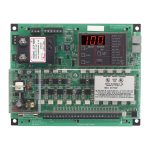
To help reduce costs further and still provide the benefits of an on-demand cleaning system, Dwyer developed an all-in-one package. Our Series DCT1000 dust collector timer controller has all the functionality of the DCT500A timer boards, with the addition of an optional plug-in pressure module, which replaces the Photohelic®. This allows differential pressure lines to be run across the filters right into the timer board. Not only does this combine all the equipment into one enclosure, but it provides a digital readout versus the dial. With the pressure module, a linear 4-20mA output can be used to remotely monitor the pressure, if desired. In addition, the integral digital display can be used in setting parameters such as on and off times instead of potentiometers typically used in other boards.
If you have any questions, the Dwyer Applications Engineers are available to assist by phone at (219) 879-8000 x6402, or by email at tech@dwyermail.com.

